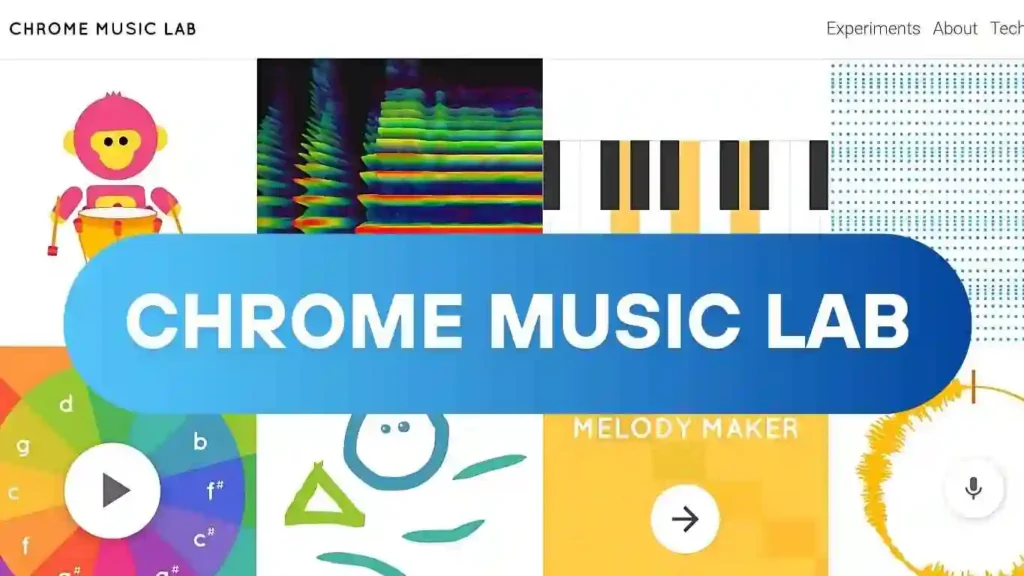Chrome Music Lab: Empower Your Musical Expression
Chrome Music Lab
Chrome Music Lab, launched by Google in 2016, is a free, web-based platform designed to make music accessible to everyone through interactive experiments (Chrome Music Lab). It allows users to explore music concepts like rhythm, melody, harmony, and sound synthesis in a fun, hands-on way. Built with web technologies such as the Web Audio API, WebMIDI, and Tone.js, it requires no special software or account, making it an ideal tool for beginners, educators, and music enthusiasts alike.
Who is Chrome Music Lab For?
Chrome Music Lab caters to a wide audience, from children discovering music for the first time to teachers integrating it into classrooms. It’s particularly valuable for those without prior musical knowledge, as its intuitive interface simplifies complex concepts. Musicians can also use it to experiment creatively, while coders can access its open-source code on GitHub (GitHub Repository) to build their own projects.
How Chrome Music Lab Works
The platform operates entirely in a web browser, with the best experience on Google Chrome. Users can access a collection of experiments, each focusing on a specific musical element. No downloads or accounts are needed—just visit the website and start exploring. The experiments are designed to be interactive, allowing users to manipulate sounds, visualize music, or collaborate in real-time.
Key Experiments in Chrome Music Lab
Chrome Music Lab features a variety of experiments, with at least 13 available as of recent reports. Below is a table summarizing some of the most popular ones:
| Experiment | Description | Key Features |
|---|---|---|
| Song Maker | Create and share songs by placing notes on a grid (Song Maker). | Choose instruments, adjust tempo, share songs. |
| Shared Piano | Play a virtual piano with up to 10 users in real-time. | Collaborative, saves compositions. |
| Rhythm | Build drum patterns by tapping a grid. | Explore beat creation with various drum sounds. |
| Spectrogram | Visualize sound waves to see frequency patterns. | Use microphone to analyze personal sounds. |
| Chords | Experiment with major and minor chords on a virtual piano. | Learn harmony and chord progressions. |
Song Maker
Introduced in February 2018 by Google Creative Lab, Yotam Mann, and Use All Five, Song Maker is a standout experiment. Users compose melodies and rhythms by clicking a grid, selecting from instruments like piano, strings, or synth. It’s an excellent tool for understanding song structure and sharing creations online.
Shared Piano
Shared Piano enables real-time collaboration, allowing up to 10 users to play a virtual keyboard together. It’s ideal for group music lessons or remote jam sessions, with the ability to save compositions for later use.
Rhythm
The Rhythm experiment lets users create drum patterns by selecting different sounds, such as electronic or conga beats. It’s a hands-on way to grasp the concept of rhythm and how beats form the backbone of music.
Spectrogram
Spectrogram visualizes sound frequencies, showing how different sounds—like a flute or your voice—create unique patterns. It’s a fascinating blend of music and science, helping users understand the physics of sound.
Chords
The Chords experiment teaches harmony by letting users play three-note chords on a virtual piano. It’s a simple yet effective way to explore how chords shape music’s emotional tone.
How to Get Started
To use Chrome Music Lab, visit musiclab.chromeexperiments.com on any device—phone, tablet, or laptop. No account is required, and each experiment features straightforward controls. For the best experience, use the Chrome browser, though other modern browsers are also compatible.
Educational Applications
Chrome Music Lab is widely used in education, particularly in STEAM (Science, Technology, Engineering, Arts, Mathematics) programs. Teachers leverage experiments like Rhythm for interactive drum circles or Spectrogram to teach sound wave physics. The platform’s versatility allows it to enhance music lessons, science classes, or cross-disciplinary projects, fostering creativity and collaboration (Brightsparks Curriculum).
Technical Foundations
The platform is powered by advanced web technologies, including:
- Web Audio API: Enables real-time audio processing in the browser.
- WebMIDI: Connects MIDI devices for enhanced interactivity.
- Tone.js: Simplifies audio synthesis and sequencing.
The open-source code, available on GitHub, allows developers to study or extend the experiments, encouraging innovation in web-based music projects.
Benefits and Limitations
Chrome Music Lab excels in making music education accessible and engaging. Its free access and cross-device compatibility broaden its reach, while its educational applications make it a favorite among teachers. However, it may lack the depth needed for advanced musicians, and some experiments require a stable internet connection for optimal performance.
Conclusion
Chrome Music Lab is a remarkable tool for anyone curious about music. Its interactive experiments make learning fun and accessible, whether you’re composing a song, exploring sound waves, or collaborating with friends. For students, teachers, or hobbyists, it’s a must-try platform that blends creativity with technology. Visit Chrome Music Lab to start your musical journey today.

